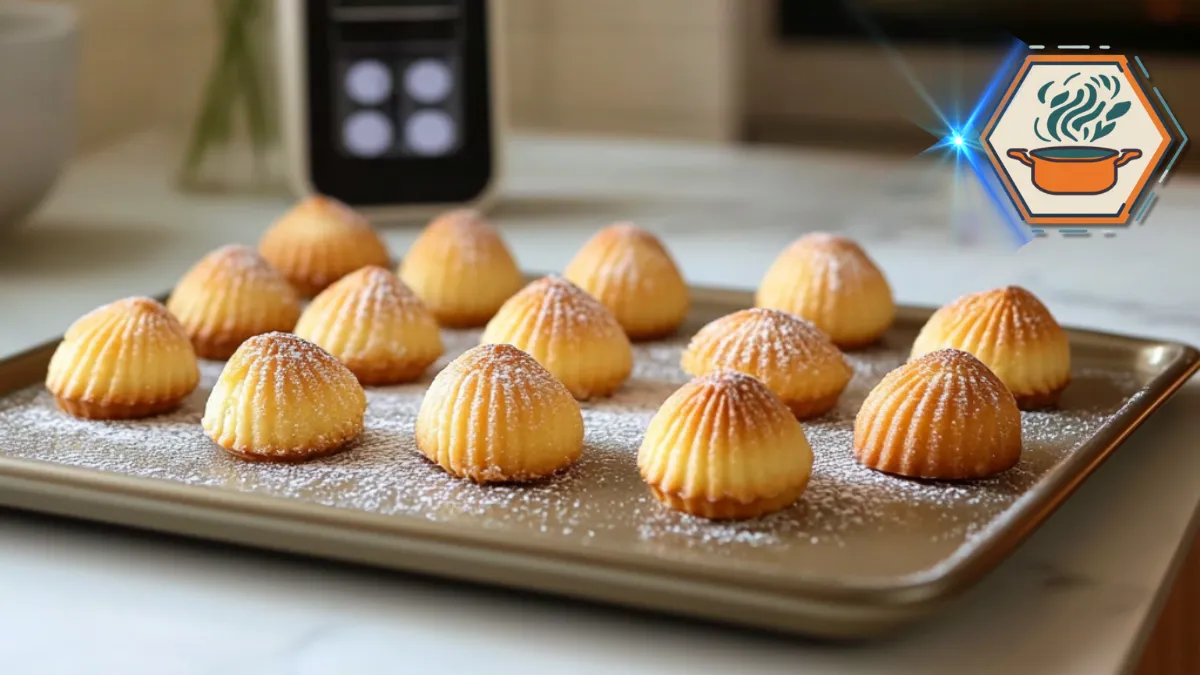Time to read:13 minutes
Table of Contents
Understanding Why Madeleines Turn Dry
Introduction to Madeleines
Madeleines are petite, shell-shaped sponge cakes that trace their origins to France. Their light, fluffy texture and buttery flavor make them a popular treat for breakfast or dessert. However, many bakers struggle with dry Madeleines. This problem can ruin the delicate texture that makes them so enjoyable. If you’re struggling with dry Madeleines, the ultimate dry Madeleines fix involves understanding the baking process and avoiding common mistakes.
Madeleines rely on simple ingredients: eggs, sugar, flour, butter, and sometimes flavorings like lemon zest or vanilla. Each ingredient must be carefully balanced to achieve a moist and tender crumb. Even small mistakes can lead to dryness. Recognizing these issues is the first step in mastering the dry Madeleines fix.
A Brief History of Madeleines
Madeleines have a rich history dating back to the 18th century in the Lorraine region of France. Legend says a young maid named Madeleine first baked them for a duke, and they quickly gained popularity. Their classic shell shape comes from the traditional molds used in baking. This history highlights the importance of technique in achieving the perfect Madeleine. Over time, bakers worldwide have adapted the recipe, but many still struggle with keeping them moist. Finding a proper dry Madeleines fix ensures that this traditional pastry retains its delightful softness.
Traditional Ingredients and Their Role in Texture
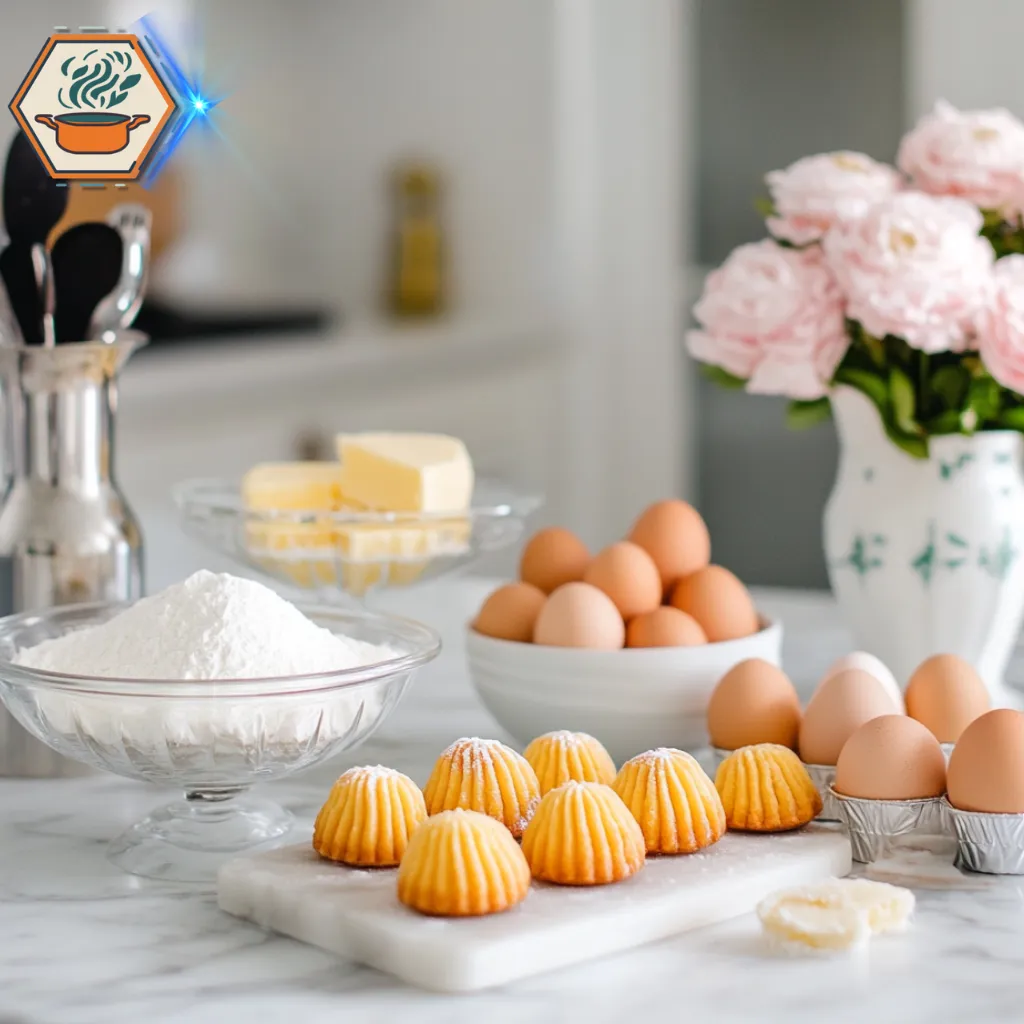
Each ingredient in a Madeleine recipe plays a vital role in texture and moisture:
- Eggs: Provide structure and moisture.
- Butter: Adds richness and softness.
- Sugar: Helps with caramelization and texture.
- Flour: Gives structure but must be balanced to avoid dryness.
Using high-quality ingredients is essential for an effective dry Madeleines fix, ensuring a soft and moist texture every time. Fresh eggs and quality butter help maintain moisture, while precise measurements ensure the right balance. Poor ingredient choices can cause dryness, no matter how well the recipe is followed.
Common Mistakes in Madeleine Baking
Many bakers unknowingly make mistakes that result in dry Madeleines. Correcting these errors is a critical part of the dry Madeleines fix.
Overbaking Issues
Overbaking is the most common reason Madeleines turn dry. These delicate cakes only need a short time in the oven. Baking for too long removes moisture, leaving them hard and crumbly. Always monitor the baking time closely. Set a timer and check the Madeleines for a light golden color. A toothpick inserted should emerge clean with a few moist crumbs, but not completely dry. Monitoring and adjusting baking time is a crucial dry Madeleines fix to prevent them from becoming dry and crumbly.
Incorrect Oven Temperature Settings
Oven temperature plays a significant role in baking Madeleines. An oven that’s too hot causes the outer layer to cook too quickly, leaving the inside underbaked and dry. Too low, and the batter doesn’t rise properly. Always ensure the oven is fully preheated and verify the temperature with an oven thermometer for precise baking. Proper temperature control is a key factor in any dry Madeleines fix.
Skipping the Resting Phase for Batter
| Common Mistake | Impact on Madeleines | Effective Solution |
|---|---|---|
| Overbaking | Leads to dry, crumbly texture | Reduce baking time by 1-2 minutes and check doneness early |
| Incorrect oven temperature | Uneven baking, dry edges, or soggy center | Use an oven thermometer to ensure accurate temperature |
| Skipping batter resting phase | Flat shape, dense, and dry texture | Rest batter in the fridge for at least 1 hour |
| Using low-quality butter or old eggs | Lack of moisture and poor flavor | Use fresh eggs and high-quality unsalted butter |
| Overmeasuring flour | Dense, dry texture due to excess flour | Spoon flour into the measuring cup and level off with a knife |
| Improper cooling and storage | Hard, dry texture over time | Cool on a wire rack and store in airtight containers with a slice of bread |
Many recipes recommend letting the batter rest in the refrigerator for at least an hour. This step allows the flour to absorb moisture and creates the signature Madeleine hump. Skipping this step can result in flat and dry Madeleines. A proper dry Madeleines fix involves patience during preparation.
Internal Link Opportunity: Learn more about how to keep Madeleines moist with additional expert tips.
Ingredient Quality and Ratios
The quality and ratio of ingredients directly affect the moisture of Madeleines. Ignoring this balance can lead to dryness, making ingredient selection an essential part of the dry Madeleines fix.
Using Fresh Eggs and Quality Butter
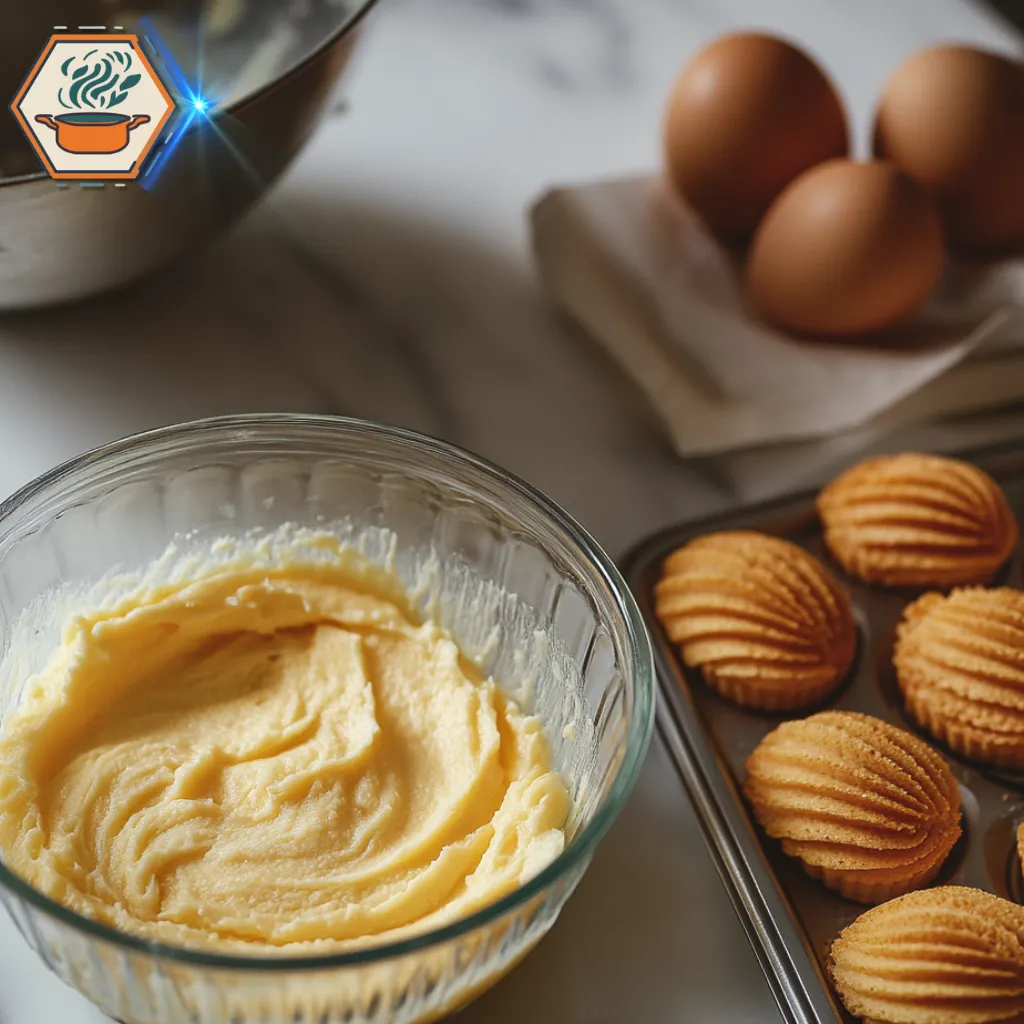
Fresh eggs are crucial for moisture and structure. Old eggs lose their binding power and don’t hold moisture well. Similarly, high-quality unsalted butter brings rich flavor and keeps the crumb soft. Substituting margarine or low-fat butter often leads to dry results. Choosing fresh, high-quality ingredients is a key step in achieving the perfect dry Madeleines fix for a soft, buttery crumb.
The Impact of Flour Type on Moisture
All-purpose flour is standard for Madeleines, but using cake flour can improve softness. Cake flour has lower protein content, resulting in a finer, more delicate texture. Overpacking flour during measuring can lead to dense and dry Madeleines. Gently spoon the flour into the measuring cup and smooth the top with a knife for accurate measurement. This simple method supports the dry Madeleines fix by preventing excess flour.
Storage Mistakes
Even Madeleines baked to perfection can lose their moisture rapidly if they aren’t stored properly. Addressing storage issues is a key element of a successful dry Madeleines fix.
Improper Cooling Methods
Madeleines need to cool on a wire rack after baking. Leaving them in the pan traps steam, making the bottom soggy while the top dries out. However, cooling them in an open, dry environment can also cause moisture loss. Covering them lightly with a clean towel allows steam to escape while keeping them soft. Proper cooling is a simple yet effective dry Madeleines fix.
Poor Storage Containers Causing Dryness
Storing Madeleines in airtight containers helps retain moisture. However, they should be completely cool before sealing to prevent condensation. Placing a slice of fresh bread in the container can add humidity and keep them soft. This trick is an easy and practical dry Madeleines fix.
For professional baking storage solutions, check out expert storage tips from King Arthur Baking.
Summary of Key Dry Madeleines Fix Tips
- Monitor baking time to avoid overbaking.
- Use fresh eggs and high-quality butter.
- Rest the batter before baking.
- Control oven temperature with precision.
- Store in airtight containers with added moisture.
Mastering these steps ensures that your Madeleines stay moist and delicious every time.
Step-by-Step Guide to Fix Dry Madeleines
Adjusting Baking Techniques
Correct Baking Time and Temperature
One of the most effective ways to fix dry Madeleines is by adjusting the baking time and temperature. Baking at a high temperature can quickly dry out these delicate treats. Instead, lower the oven temperature slightly and extend the baking time. This allows the Madeleines to cook evenly and retain moisture. Baking at 170°C (338°F) instead of 180°C (356°F) can make a significant difference.
Importance of Using Silicone Molds
Traditional metal molds conduct heat quickly, often causing the edges to overcook. Switching to silicone molds can help distribute heat more evenly. This simple change can greatly fix dry Madeleines by preventing them from becoming too crisp on the outside while remaining dry inside.
Ingredient Adjustments for Moisture
Adding Honey or Syrup for Extra Softness
Incorporating natural sweeteners like honey or maple syrup into the batter can add needed moisture. Replace a small portion of sugar with honey—about 1-2 tablespoons. This change not only sweetens but also helps to fix dry Madeleines by locking in moisture.
Substituting Ingredients to Lock in Moisture
Another way to fix dry Madeleines is by swapping out ingredients. Opt for cake flour over all-purpose flour to achieve a lighter, more tender texture. Adding an extra egg yolk or a spoonful of yogurt can also increase the moisture content. These ingredient tweaks create a more tender and moist Madeleine.
Post-Baking Moisture Tricks
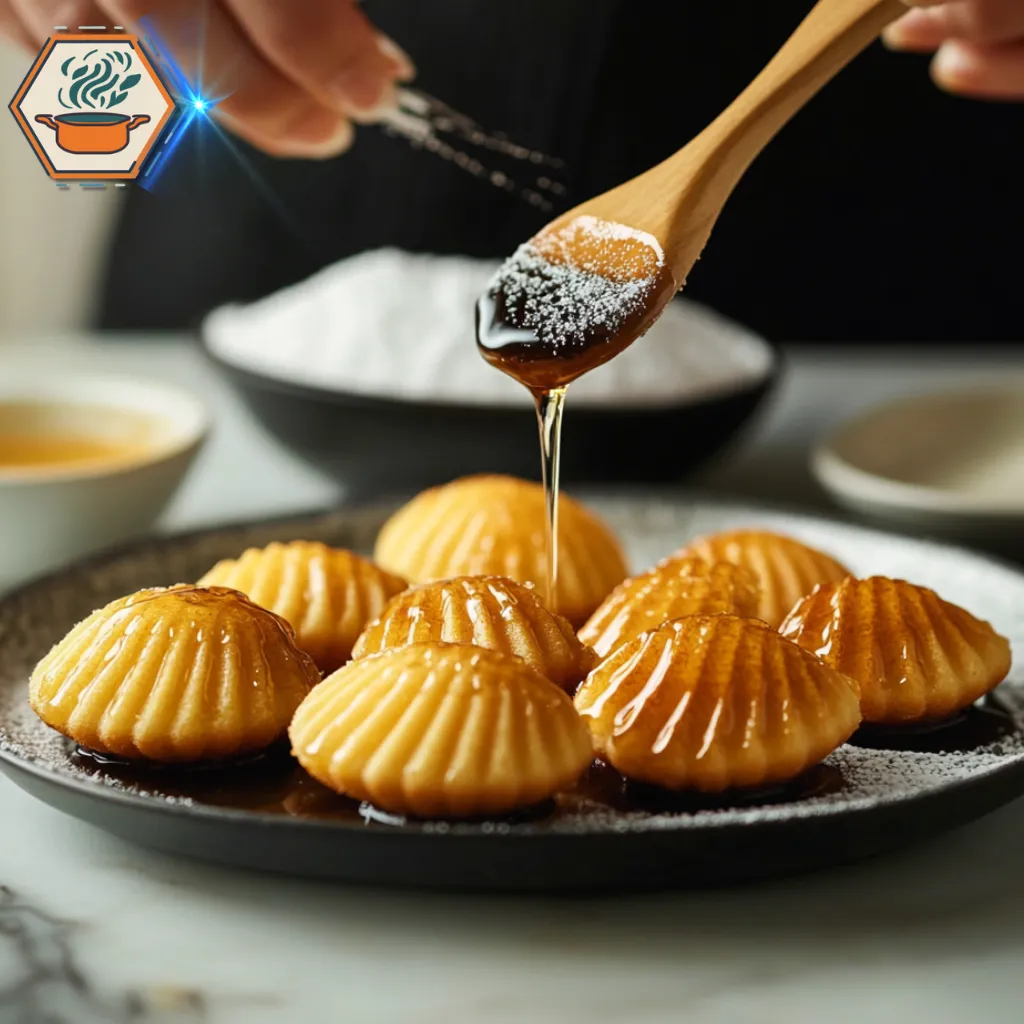
Brushing Madeleines with Simple Syrup
A quick and effective method to fix dry Madeleines after baking is brushing them lightly with simple syrup. This syrup, made from sugar and water, adds a layer of moisture to the surface, making each bite soft and flavorful. This technique is commonly used in professional baking to enhance texture.
Wrapping in Parchment While Warm
Immediately wrapping warm Madeleines in parchment paper traps steam, which softens the texture. This simple method is especially effective if your Madeleines turn out dry. It helps retain moisture and enhances softness naturally.
Alternative Methods for Softness
Storing with a Slice of Bread to Maintain Humidity
An old baker’s trick to fix dry Madeleines involves storing them with a slice of fresh bread in an airtight container. The bread releases moisture, which the Madeleines absorb, becoming softer over time. This method works best if left overnight.
Using Airtight Containers Effectively
Proper storage is key to maintaining soft Madeleines. Place them in an airtight container as soon as they cool down. Adding a slightly damp paper towel in the container can also provide additional humidity. This storage solution prevents the Madeleines from becoming stale and dry.
For more tips on keeping baked goods soft, check out How to Keep Madeleines Moist on Recipes Mind.
Understanding and controlling moisture is essential in baking to achieve desired textures and flavors. Professional bakers employ various techniques to manage moisture content in their creations. For comprehensive insights into these methods, you can refer to the following resource.
Optimal Baking Environment
Creating the perfect baking environment is crucial for preventing dry Madeleines. The baking environment directly impacts the texture and moisture of these delicate French cakes.
Controlling Oven Humidity
Dry Madeleines Fix begins with managing the oven’s humidity. A dry oven can quickly sap moisture from the batter. Here are ways to maintain the right humidity:
- Place a small oven-safe dish of water on the bottom rack during baking.
- Use convection settings cautiously, as they circulate dry air.
- Avoid opening the oven door frequently, which releases moisture.
Controlling oven humidity is a crucial dry Madeleines fix that keeps them moist throughout the baking process.
Benefits of Resting the Batter Overnight
Another important factor in achieving moist Madeleines is resting the batter overnight. This step allows the batter to fully hydrate, resulting in a more tender crumb.
- Hydration enhances texture and flavor.
- Resting creates the signature Madeleine hump.
- A well-rested batter bakes evenly.
Ingredient Temperature Management
Using the right ingredient temperatures significantly affects Madeleine texture and moisture.
Using Room-Temperature Eggs and Butter
| Ingredient | Cold Temperature Effect | Room Temperature Benefit |
|---|---|---|
| Eggs | Dense and uneven texture | Creates stable emulsion, adds air |
| Butter | Clumps with sugar, uneven mixing | Blends smoothly, light batter |
| Milk (if used) | Causes batter separation | Mixes evenly, consistent texture |
| Flour | May not hydrate properly | Absorbs moisture evenly |
Cold ingredients can lead to dense and dry Madeleines. To avoid this, use room-temperature eggs and butter:
- Room-temperature eggs create a stable emulsion, trapping air.
- Softened butter blends smoothly with sugar, ensuring a light batter.
- Cold ingredients prevent the batter from aerating properly.
Using room-temperature ingredients is a proven dry Madeleines fix that ensures a lighter and more tender texture.
How Cold Ingredients Affect Texture
Cold eggs and butter can shock the batter, resulting in:
- Dense, uneven texture
- Reduced volume and rise
- Dry and crumbly cakes
Ensuring ingredients are not cold is essential for a successful dry Madeleines fix.
Expert Baker Tips
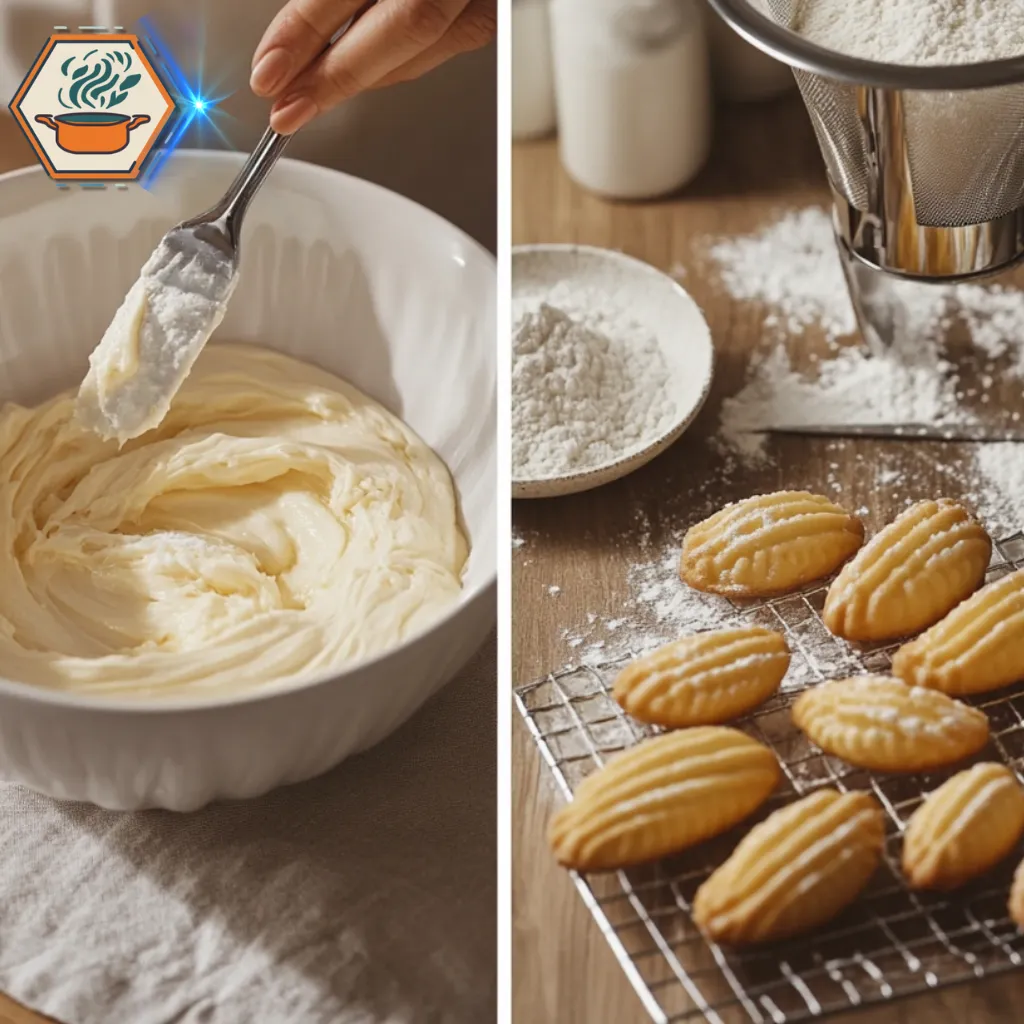
Professional bakers follow specific techniques to prevent dry Madeleines.
Folding Techniques for a Light Texture
Overmixing is a common mistake. Gentle folding maintains air in the batter:
- Use a spatula to fold flour into the wet mixture slowly.
- Avoid vigorous stirring, which deflates the batter.
- Fold until just combined to keep the mixture airy.
Proper folding techniques are an essential dry Madeleines fix for achieving soft, sponge-like results.
Choosing the Right Flour Blend
The flour choice affects texture and moisture. For moist Madeleines:
- Use cake flour for a tender crumb.
- Sift flour to prevent clumps and promote lightness.
- Avoid over-packing flour, which can dry out the batter.
Selecting the right flour and measuring accurately is key to the dry Madeleines fix.
Mistake-Proof Baking Routine
Following a step-by-step routine can eliminate common baking errors.
Step-by-Step Checklist for Perfect Madeleines
- Measure ingredients accurately to avoid a dry batter.
- Rest the batter overnight for better hydration.
- Use room-temperature ingredients for proper emulsification.
- Preheat the oven fully before baking.
- Control oven humidity with a water dish.
- Bake at the correct temperature to avoid overbaking.
Common Pitfalls and How to Avoid Them
Avoid these mistakes to prevent dry Madeleines:
- Overbaking: Reduces moisture. Remove Madeleines when edges are golden.
- Skipping batter rest: Leads to a flat and dry texture.
- Using cold ingredients: Causes a dense crumb.
- Overmixing: Deflates batter, resulting in dryness.
By carefully following this routine, bakers can achieve moist, tender Madeleines every time.
For more insights, check out this guide on how to keep pancakes crispy, which shares techniques to maintain texture in baked goods.
Maintaining the right environment, handling ingredients properly, and following expert baking tips will ensure your Madeleines stay soft and moist, avoiding the need for any future dry Madeleines fix.
Flavor Enhancements That Add Moisture
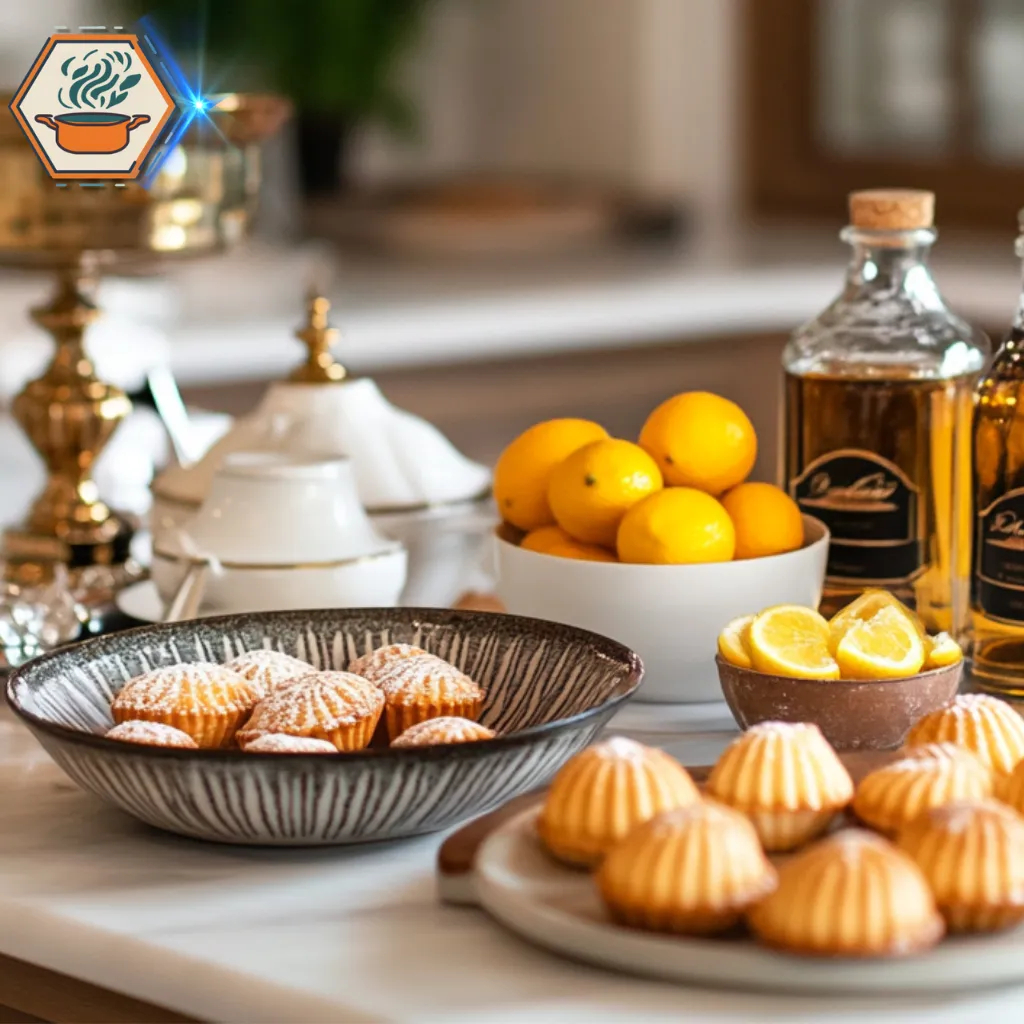
One of the most effective ways to address the issue of Dry Madeleines Fix is by enhancing the batter with ingredients that naturally boost moisture. Infusing the batter with citrus zest, such as lemon or orange, introduces not only a fresh aroma but also subtle oils that keep the Madeleines tender. Additionally, adding flavored syrups, like vanilla or almond, enriches both flavor and texture, preventing dryness.
Incorporating fruit purees is a flavorful dry Madeleines fix that naturally enhances moisture and softness.. They blend seamlessly into the batter, contributing natural sugars and fibers that maintain softness. Similarly, nut pastes, like almond or hazelnut, can provide a creamy texture while adding depth of flavor.
For more creative baking ideas, explore how to make puree and incorporate it into baked goods.
Innovative Baking Tools
Utilizing the right baking tools can significantly impact the texture of Madeleines. Steam ovens are an innovative solution that introduces moisture during the baking process. The steam prevents the batter from drying out and creates a soft, fluffy crumb. If a steam oven isn’t available, placing a small dish of water in a conventional oven can mimic this effect.
Choosing silicone molds over metal ones can be a game-changing dry Madeleines fix by ensuring even heat distribution.. Silicone molds are more forgiving than metal molds, as they distribute heat evenly and reduce the risk of overbaking. This helps the Madeleines stay soft and moist.
Serving and Pairing Suggestions
Pairing Madeleines with warm beverages is a delightful dry Madeleines fix that enhances texture and flavor.. Pairing them with coffee or tea allows the moisture from the drink to balance out any slight dryness, creating a delightful experience. For a decadent twist, dipping Madeleines in chocolate glazes or fruit sauces adds both flavor and softness.
Experimenting with fillings can also help. Light cream fillings or fruit preserves introduce extra moisture, making each bite more enjoyable.
Storing and Transporting Without Drying Out
Proper storage is crucial for preventing Madeleines from becoming dry. Proper storage in airtight containers is a necessary dry Madeleines fix to prevent them from drying out. Placing a piece of parchment paper between layers can prevent them from sticking together while preserving texture.
When gifting Madeleines, wrapping them in wax paper and sealing them in decorative tins ensures they remain soft. For transporting, using insulated containers can protect against temperature changes that may lead to dryness.
For best practices in keeping baked goods fresh, learn more about bone broth cooking and storage techniques that can inspire similar storage solutions.
By integrating these creative methods, your Madeleines will remain moist and flavorful, offering a delightful treat every time.

